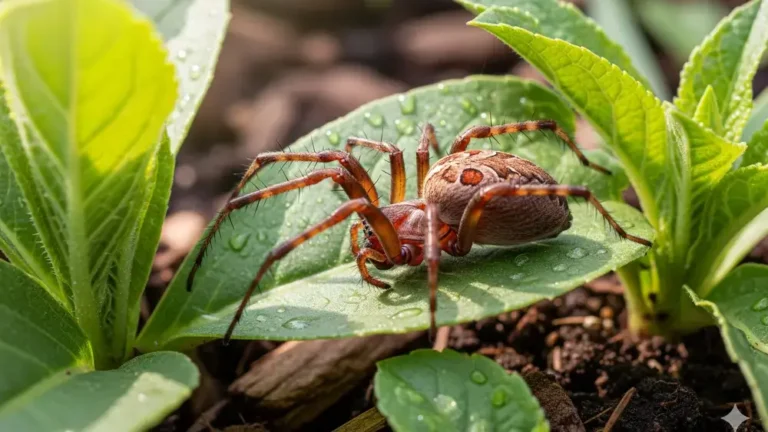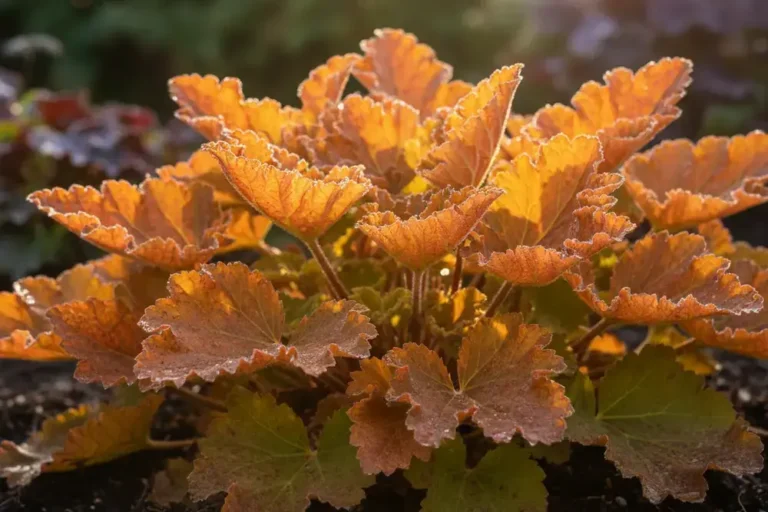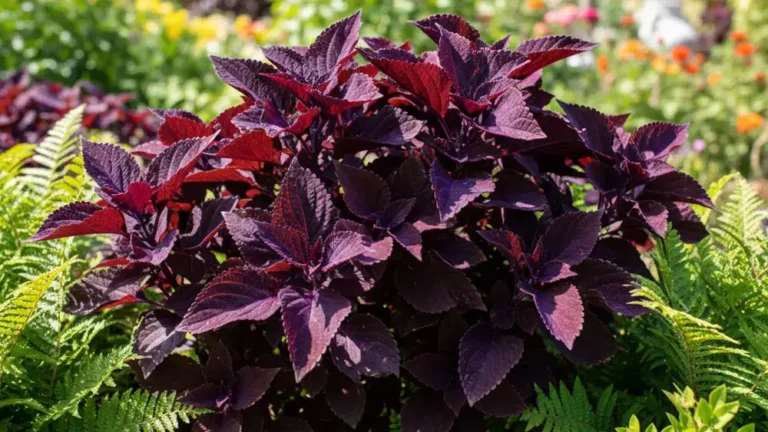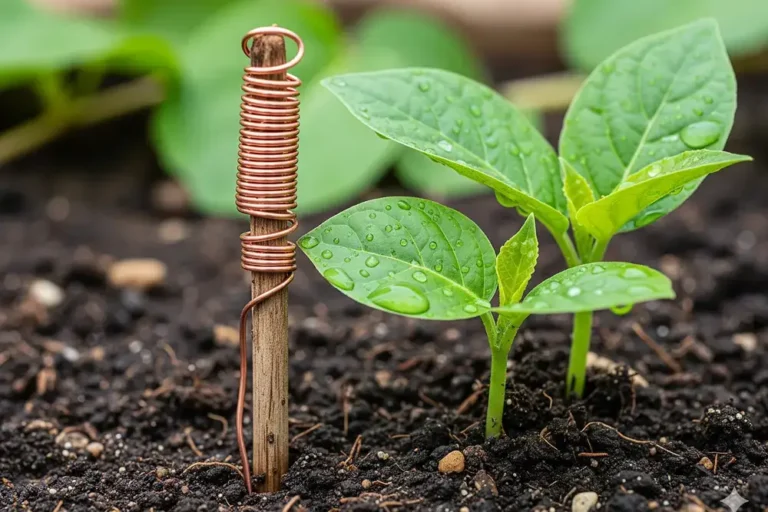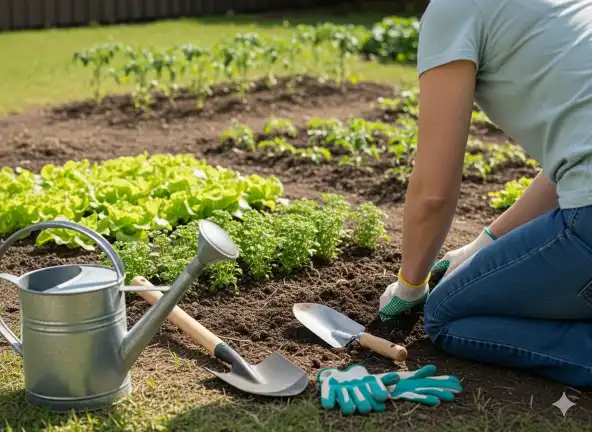What to Do With Primroses After Flowering
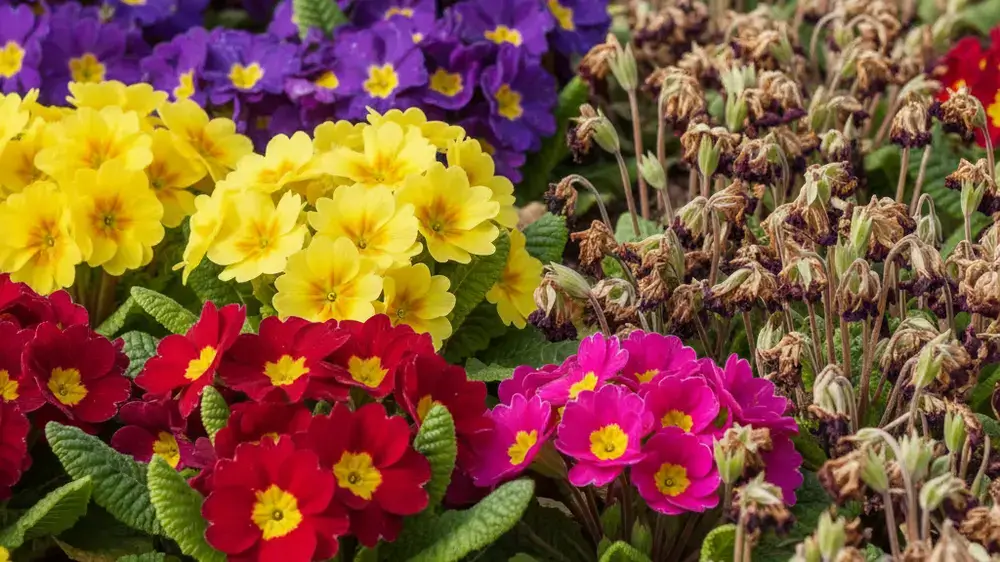
Primroses are among the most cheerful plants in any garden, bursting into color just when winter finally loosens its grip. Their bright, delicate blooms bring life to flower beds, borders, and pots. But many gardeners ask the same question once the flowers fade: What do you actually do with primroses after flowering?
If you’ve ever wondered whether to cut them back, feed them, or move them, you’re not alone. Taking the right steps after flowering is the secret to keeping your primroses healthy, ensuring they return stronger and even more colorful next year. In this guide, we’ll explore everything you need to know about primroses after flowering, from deadheading and pruning to dividing, transplanting, and even preparing them for winter.
By the end, you’ll have a step-by-step plan to give your primroses the best care possible and keep them thriving season after season.
Why Caring for Primroses After Flowering Matters
It’s tempting to ignore primroses once their blooms fade, but a little attention now makes a big difference later. Here’s why post-bloom care is so important:
- Healthier plants – Proper care redirects energy from seed production into root and leaf growth.
- More flowers next season – Regular pruning and feeding encourage stronger, more abundant blooms.
- Longer lifespan – Well-cared-for primroses can live and flower for many years.
- Indoor vs outdoor differences – Primroses in pots need more attention with watering and feeding, while those in garden beds benefit from dividing and soil refresh.
Think of it this way: the way you treat primroses after flowering determines how stunning they’ll look next year.
Deadheading and Pruning Primroses After Flowering
Why Deadheading Is Essential
Once primroses finish flowering, they naturally start producing seeds. While that’s fine in nature, for gardeners it means less energy for future growth. Deadheading prevents seed formation and keeps the plant looking tidy.
How to Deadhead Correctly
- Pinch off faded flowers using your fingers or a pair of clean scissors.
- Snip just above the base of the spent flower stalk.
- Continue deadheading regularly throughout the blooming season to encourage fresh flowers.
Cutting Back Foliage
After flowering, some leaves may look tired or damaged. Trim back yellow or wilted foliage to keep the plant neat. Avoid cutting all the leaves at once. Primroses still need healthy foliage for photosynthesis and energy storage.
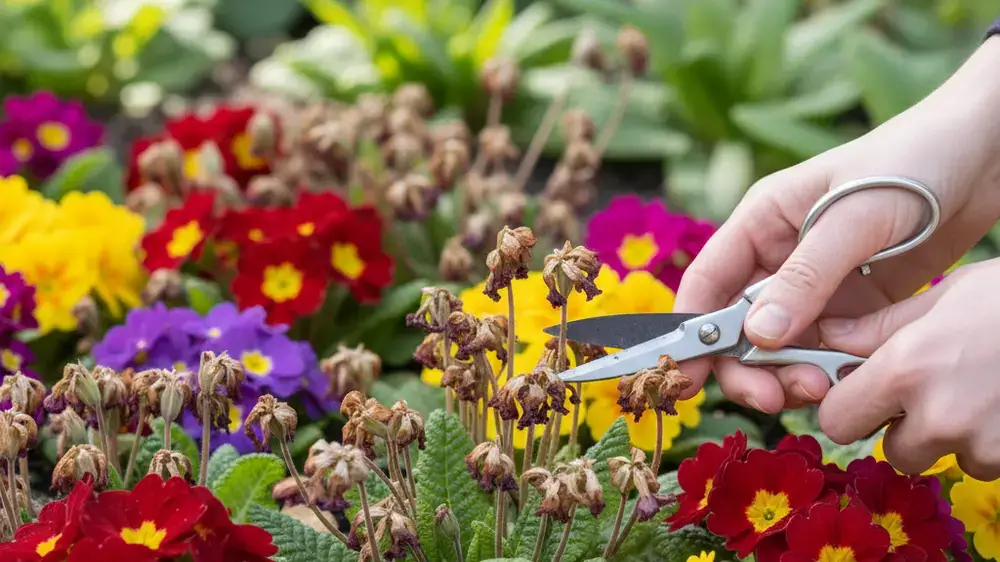
Feeding and Watering After Bloom
Choosing the Right Fertilizer
Primroses are hungry plants, especially after a long bloom. Feed them with a balanced, slow-release fertilizer or a liquid feed high in potassium. This helps replenish nutrients and supports root strength.
How Often to Water
- Keep the soil consistently moist but not soggy.
- In pots, check daily—containers dry out faster.
- In the ground, water deeply once or twice a week depending on weather.
Soil Care Tips
Good soil makes all the difference:
- Add compost or organic matter to enrich soil.
- Mulch around plants to help retain moisture and suppress weeds.
- Improve drainage if water tends to pool, as primroses dislike sitting in soggy soil.
Dividing and Transplanting Primroses After Flowering
When to Divide Primroses
Primroses form clumps that grow larger over time. If left alone, they can become overcrowded and stop flowering well. Signs it’s time to divide include:
- Fewer flowers than usual
- A clump that looks too crowded
- The center of the plant dying back
Step-by-Step Division Process
- Gently dig up the clump after flowering.
- Separate it into smaller sections, making sure each has healthy roots and leaves.
- Replant the divisions into fresh soil at the same depth they were growing before.
- Water well to help them settle.
Best Spots for Replanting
- Shady garden borders with well-drained soil.
- Under trees where spring color is welcome.
- Containers and pots on patios for easy care.
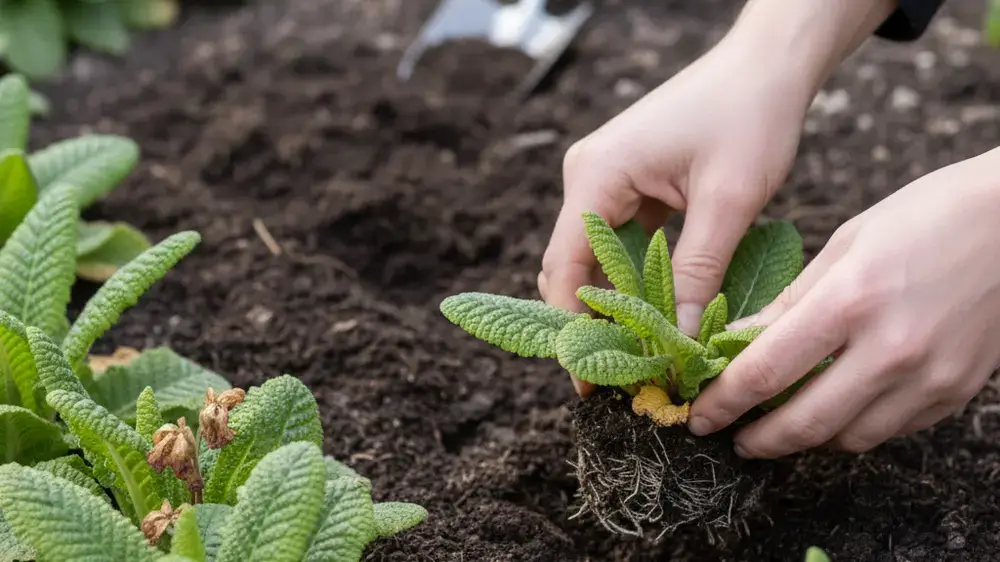
Overwintering and Seasonal Care
Caring for Primroses in Pots Over Winter
Primroses in pots are more exposed to cold weather than those in the ground. To protect them:
- Move containers to a sheltered area such as a porch or greenhouse.
- Cover with fleece during frosty nights.
- Keep the soil slightly moist, but avoid overwatering.
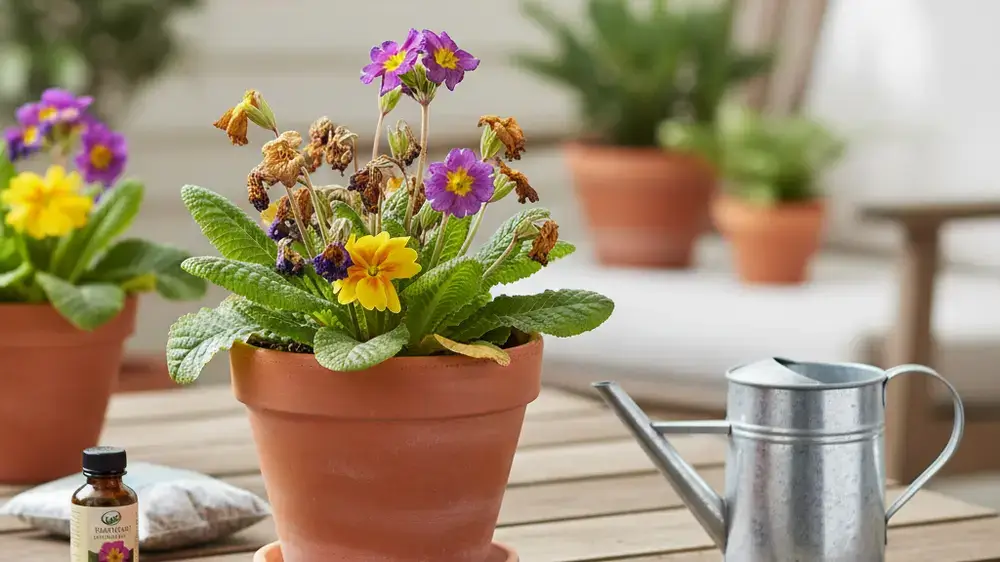
Outdoor Primroses in Cold Climates
- Add a thick layer of mulch or leaves around plants for insulation.
- In very harsh winters, cover plants with garden fleece or cloches.
Preparing for Next Spring
- Feed lightly in late winter with a slow-release fertilizer.
- Water when new growth appears.
- Remove old mulch in spring to make way for fresh shoots.
Common Mistakes to Avoid With Primroses After Flowering
Even experienced gardeners can make errors that weaken primroses. Avoid these common pitfalls:
- Overwatering – soggy soil leads to root rot.
- Neglecting deadheading – reduces chances of fresh blooms.
- Using too much fertilizer – encourages foliage but few flowers.
- Ignoring pests – aphids and slugs often appear after flowering.
Actionable Tips to Keep Primroses Thriving
Here’s a quick checklist to guide your care routine:
- Deadhead regularly to prevent seed formation.
- Trim back tired foliage but leave healthy leaves.
- Feed with a balanced fertilizer after flowering.
- Water consistently, especially in pots.
- Divide clumps every 2–3 years for healthier growth.
- Protect from harsh frost with mulch or covers.
- Keep an eye out for pests and treat early.
Tip: Mix primroses with other shade-loving perennials like hostas or ferns to create a low-maintenance, colorful garden bed.
Conclusion
Caring for primroses after flowering is simpler than many gardeners think, but it’s also one of the most important steps in keeping these plants healthy and vibrant. With just a little effort—deadheading, feeding, dividing, and protecting them through winter—you can enjoy a stunning display year after year.
So next time your primroses finish blooming, don’t toss them aside. Give them the post-flowering care they deserve, and they’ll reward you with even brighter, longer-lasting color.
If you found this guide helpful, be sure to explore more of our gardening tips and start creating a garden that thrives in every season.
FAQs About Primroses After Flowering
1. Should I cut back primroses after flowering?
Yes, trimming is one of the best things you can do for primroses after flowering. Snip off faded blooms and any yellowing leaves to stop the plant from wasting energy on seed production. This encourages new leaf growth and helps the plant store energy for the next flowering season. Be gentle when pruning—leave healthy green leaves intact so the plant can photosynthesize and remain strong.
2. Can primroses flower again after the first bloom?
With the right care, primroses after flowering often produce a second flush of blooms. Deadheading spent flowers, feeding with a potassium-rich fertilizer, and keeping the soil consistently moist all encourage repeat blooming. In cooler climates, primroses may flower again later in the season, while in warmer areas, they may focus on storing energy for next year’s display.
3. How do I care for primroses in pots after flowering?
For potted primroses after flowering, remove faded blooms, feed with a liquid fertilizer, and ensure the soil stays moist but not waterlogged. Pots dry out faster than garden beds, so check regularly. If the plant looks crowded, consider transplanting it into a larger pot or dividing the clump into smaller sections. Over winter, move pots to a sheltered spot to protect them from frost.
4. When should I divide or transplant primroses after flowering?
The best time to divide or transplant primroses after flowering is in late spring or early summer, once the blooms have faded and the plant is focused on root growth. Carefully dig up the clump, split it into smaller sections, and replant them in fresh, well-drained soil. Division prevents overcrowding, encourages healthier growth, and gives you more plants to brighten up your garden.
5. Do primroses come back every year after flowering?
Yes, most primroses are perennial, meaning they return year after year if properly cared for. Looking after primroses after flowering by deadheading, feeding, and protecting them through winter ensures a strong comeback each spring. While some hybrid primroses are short-lived, dividing and replanting healthy clumps can extend their life, giving you vibrant color in your garden for many seasons.

